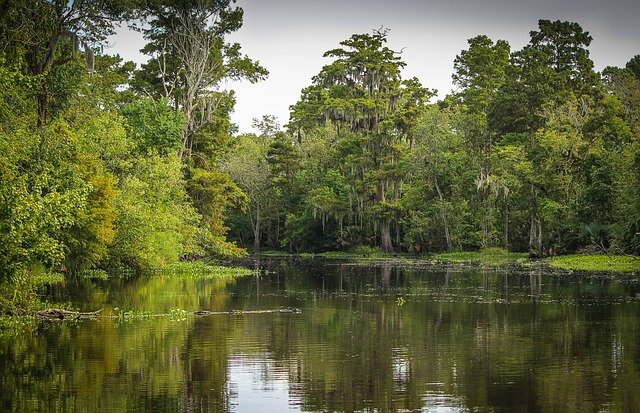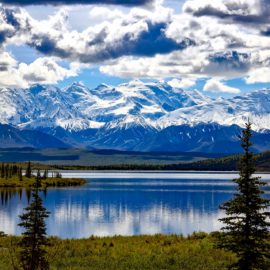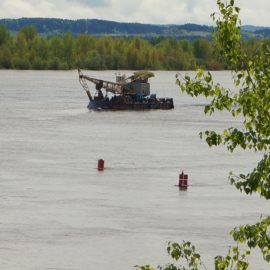
The North Shore is back into planting cedar trees. There were these trees before but the damming of the Mississippi River Gulf Outlet in 2009 allowed salt water to intrude, killing off the cedar trees. The water is now fresh enough that planting cedar trees is feasible and was done recently.
Recently, 2,400 cypress tree saplings were planted across 12 acres of land off of Lake Road in a partnership between St. Tammany Parish government and landowner Arcosa Marine of Madisonville. The plot is bordered by some healthy cypress trees but is now taken over by grasses. “In here the salt would settle, and it degraded the marsh,” said John “Spaff” Goodnow, the parish government administration’s landscape and parkway manager.
nola.com
I must admit the picture in the paper showed an easier planting than when I did it as I was in marsh water up to my mid-calves or higher and this looked like far firmer ground. These trees were planted through the Pontchartrain Conservancy and 2,400 2-year saplings were planted to help stop storm surge on the North Shore.
“It won’t stop the surge, but it will help break up some of the intensity of the wave,” Goodnow said. This project built on a larger replanting effort by St. Tammany Parish to preserve its tree canopy, mitigate flooding and create wildlife habitat. Since 2013, the parish has planted almost 62,000 trees across 90 acres. “We recognize the benefits of such a planting: flood protection, resilience, a canopy of trees once they mature and a coastal wetland barrier,” said Parish President Mike Cooper. “It certainly is a priority.”
Nature needs a helping hand as the land has changed to where natural reseeding is not effective.
These saplings have a better chance at putting down roots and building resilience that will allow them to mature, said Shelby Barrett, a Pontchartrain Conservancy coastal scientist. “They face a lot of barriers to natural germination,” Barrett said. “For cypress trees specifically, their life cycle is very tied to the seasonality and the duration of that flooding.” If areas are flooded when seeds emerge from their protective pod, they’ll drown. If other shrubs and grasses are too tall around their resting place, the seeds will lose the competition for light. And then there’s the wildlife that enjoy snacking on the youngest of trees. “So by planting trees that are approximately two years old, they’ve already surpassed some of those barriers,” Barrett said. “They’re mature enough to deal with those stressors in a way that the young ones aren’t.”
Members of the Conservancy are monitoring 350 of the trees to see if they are taking root and surviving. You can volunteer with the Pontchartrain Conservancy.



